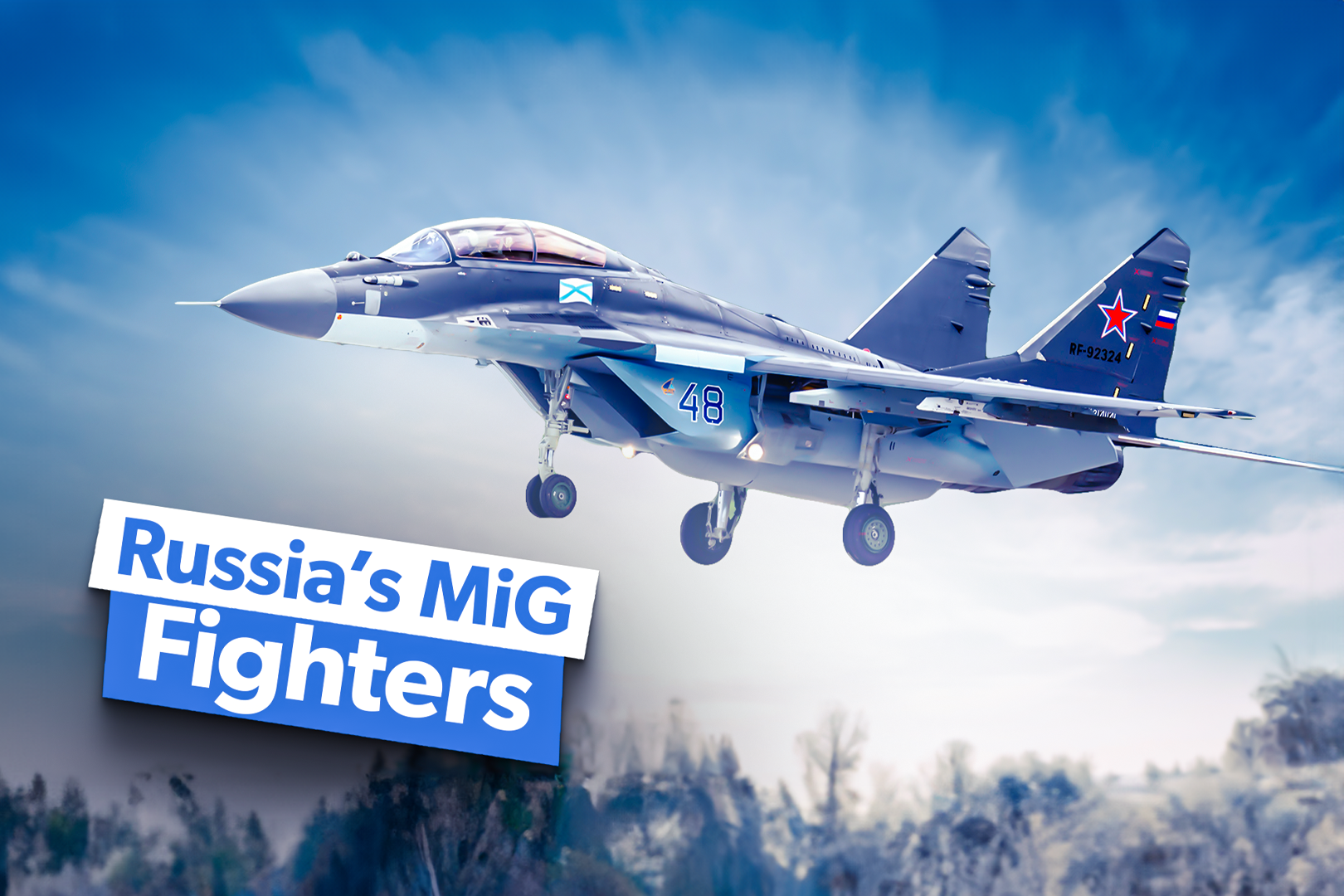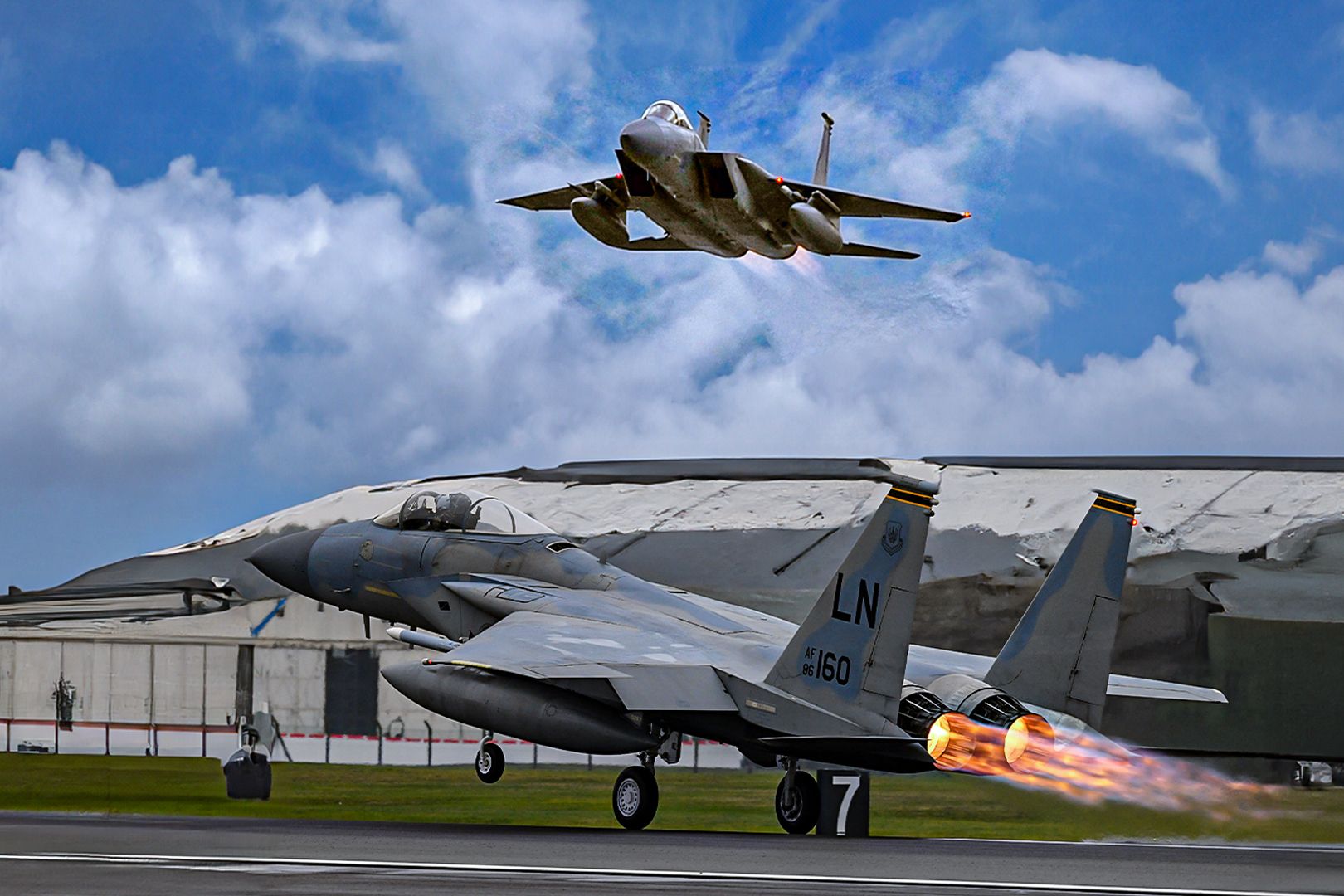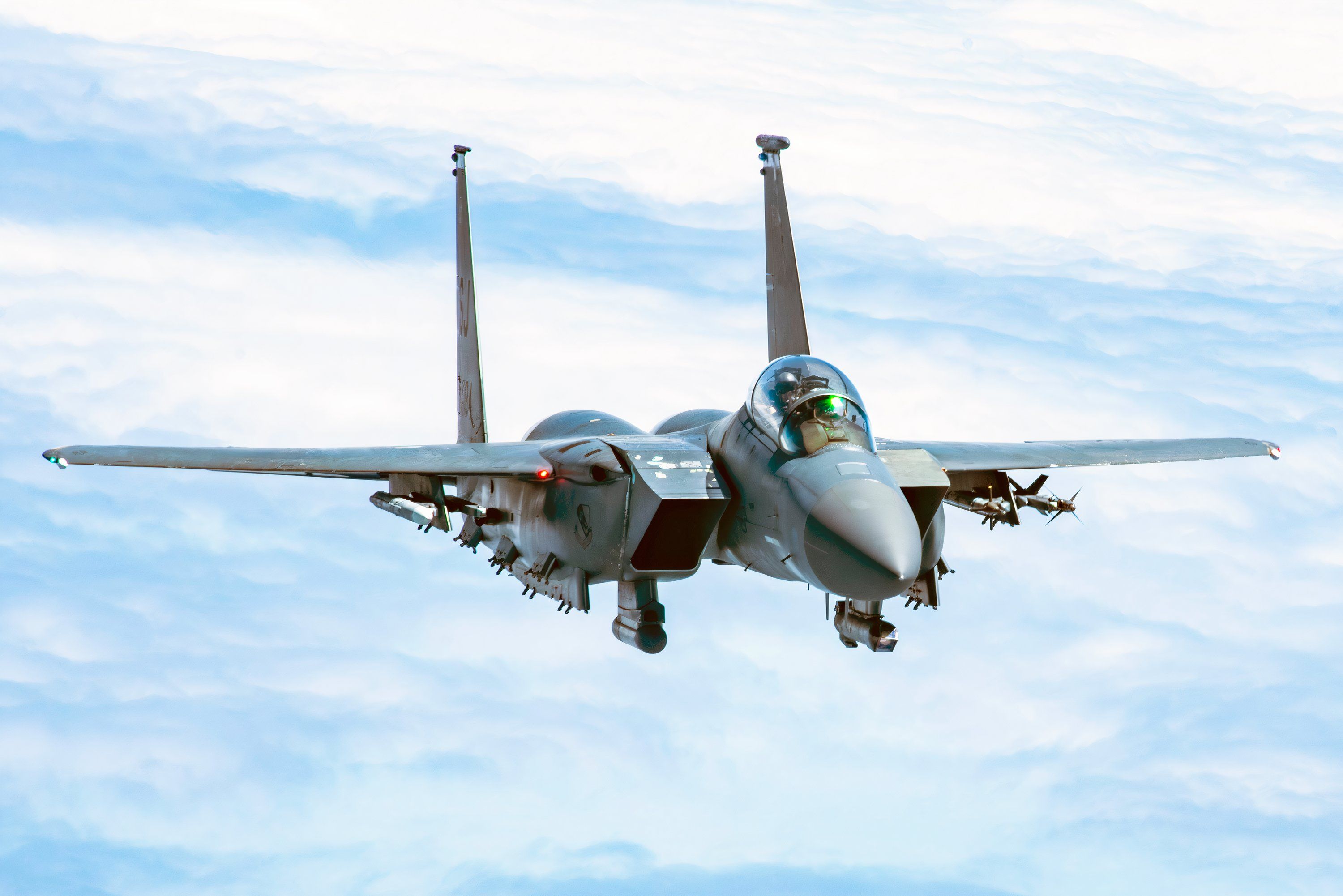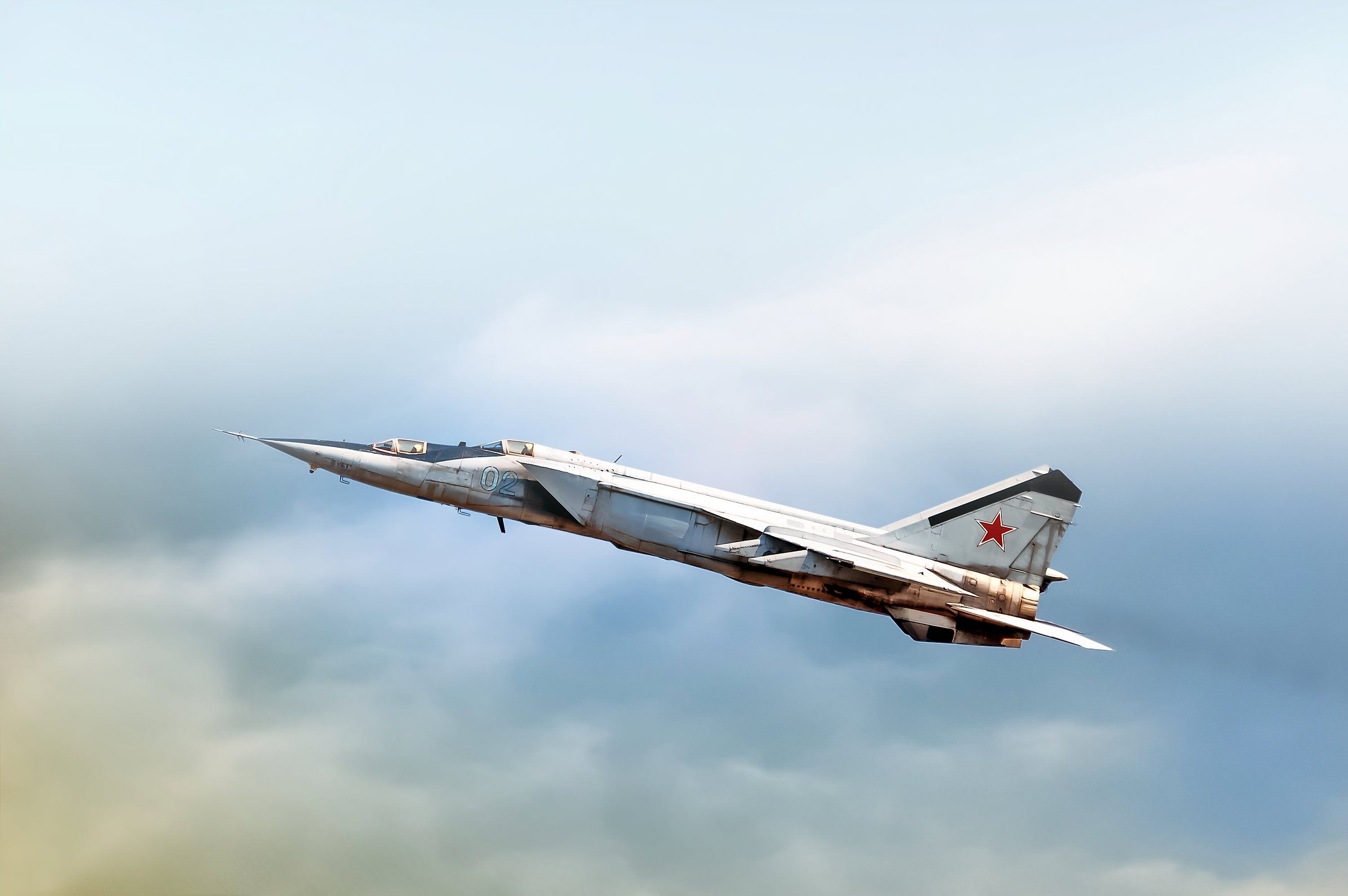Summary
- MiG-25 was designed as an interceptor, not for air superiority.
- F-15 Eagle is better for maneuverability and power.
- MiG-25 excelled in top speed but lacked important performance metrics.
This article will examine the Soviet Union MiG-25 Foxbat and compare it to the American McDonnell Douglas F-15 Eagle. While both aircraft could fly at supersonic speeds, one was better suited as an all-weather multirole jet fighter.
In the 1950s, the Soviet Union and the United States were involved in “The Cold War.” The term was used because, while not directly involved in fighting, both countries supported opposite sides in proxy war regional conflicts. At the time, the Soviet Union was particularly worried about American bombers that could deliver nuclear weapons and high-flying reconnaissance aircraft like the Lockheed U-2.
The Soviets built the MiG-25 to combat American aircraft
In 1958, Soviet intelligence reported that the Americans were working on a high-altitude spy plane that could fly at speeds slightly exceeding Mach 3. To counter the American threat, the Mikoyan-Gurevich Design Bureau began building a supersonic fighter interceptor called the “MiG-25,” NATO reporting name “Foxbat.” Perhaps influenced by the design of the United States Navy’s North American A-5 Vigilante supersonic bomber, the MiG-25 made its maiden flight on March 6, 1964, and entered service with the Soviet Air Defense Forces in 1970.

Related
What MiG Fighters Does Russia Still Use?
The Russian Air Force continues to operate three MiG-29 multirole variants and the fast MiG-31 interceptor.
During its development, the Soviet Union was highly secretive about the MiG-25’s capabilities and only displayed the aircraft to the public for the first time at the July 9, 1967, October Revolution airshow. During the airshow, which was held at Moscow Domodedovo Airport (DME), three MiG-25s performed a flypast. This was the first glimpse of the aircraft in the West, and its massive air intakes and huge wingspan worried the United States.
Western military analysts got it all wrong
Military analysts thought that the MiG-25’s large wings indicated that it was highly maneuverable, while the large air intakes indicated that it had large engines capable of producing super-fast speeds. The West also did not know that the aircraft was manufactured using stainless steel and mistakenly thought that it could have been built using lightweight titanium rather than much heavier steel.
In the mid-1960s, using lessons learned during the Vietnam War, the United States Air Force (USAF) concluded that maneuverability and extra power were more critical than super-fast speeds. To combat the threat posed by the MiG-25 in the late 1960s, the Air Force asked companies to submit their designs for a modern air superiority fighter. On December 23, 1969, the Air Force dismissed proposals from Fairchild Republic and North American Rockwell and declared McDonnell Douglas the winner.
Photo: USAF
The McDonnell Douglas F-15 Eagle prototype made its maiden flight on July 27, 1972, with the two-seat trainer version flying for the first time the following year. The first operational F-15 Eagle entered service with the United States Air Force on January 9, 1976, and further development of the aircraft is still in service with the USAF and militaries of other friendly nations.
The defection of Lieutenant Viktor Belenko
What the Americans did not know at the time was that they would not only get the chance to study a MiG-25 up close but also learn about the military capabilities of the Soviet Air Defence Forces. In the summer of 1976, Soviet pilot Lieutenant Viktor Belenko was stationed at Chuguyevka Air Base, 120 miles from Vladivostok in Russia’s Far East. Unhappy at home and increasingly disillusioned with life in the Soviet Union, on September 6, 1976, Belenko decided to defect to the West.
Using a training flight as cover, Belenko faked a problem with his aircraft and, instead of returning to base, headed across the Japan Sea to the island of Hokkaido, where he intended to land at Chitose Air Base. While flying across the Sea of Japan, Belenko flew just above the water to avoid radar. As he neared Japan, he suddenly climbed to 20,000 feet, indicating that he wanted to be seen by Japanese radar.
Once detected, the Japan Air Self-Defense Force (JASDF) scrambled a pair of McDonnell Douglas F-4 Phantom IIs. The weather was bad at the time, and because the Phantoms had a poor look-down, radar could not detect Belenko and his MiG-25. Now, low on fuel, rather than try and get to Chitose Air Base, Belenko decided to land at Hakodate Airport (HKD), a civilian airport in the south of the island. When he touched down, he narrowly missed a Boeing 727 and overshot the runway by 790 feet.
When the police arrived, Belenko said he was defecting and that he wanted to claim political asylum in the United States. The Soviet Union demanded that Belenko and the MiG-25 be returned immediately, but Japan wanted to show the MiG-25 to the Americans first. Rather than a highly maneuverable, super-fast titanium-clad fighter, the Americans found one of the heaviest fighter planes ever built. They also discovered that the MiG-25 had large wings to provide enough lift to get airborne and would have no chance against a Western fighter jet in air-to-air combat.
Photo: Vaalaa | Shutterstock
|
Comparisons |
MiG-25P Foxbat-A |
F-15C Eagle |
|---|---|---|
|
Engine thrust |
240kN |
211kN |
|
Thrust-to-weight ratio |
0.41 |
1.03 |
|
Maximum speed |
Mach 2.8 |
Mach 2.5 |
|
Climb speed |
2.5 minutes to 36,000 feet |
1 minute to 40,000 feet |
|
Combat radius |
900 miles |
1,242 miles |
|
Radar range |
62 miles |
136 miles |
As the figures above show, the only metric in which the MiG-25 is superior is top speed. Both planes are entirely different because they were designed for various roles. As we have seen in the war in Ukraine, Russia has a different doctrine than NATO. During Soviet times, the Russian Air Force used its aircraft to defend Russian airspace and support ground troops. In contrast, NATO’s mission in any conflict is to establish air superiority before troops go in. The MiG-25 was designed to shoot down enemy bombers, while the F-15 Eagle was built to establish air superiority.

Related
Why The F-15 Eagle Has Never Been Shot Down
After nearly five decades in service, the F-15 Eagle remains undefeated, but how has the iconic fighter managed to maintain a perfect record?




